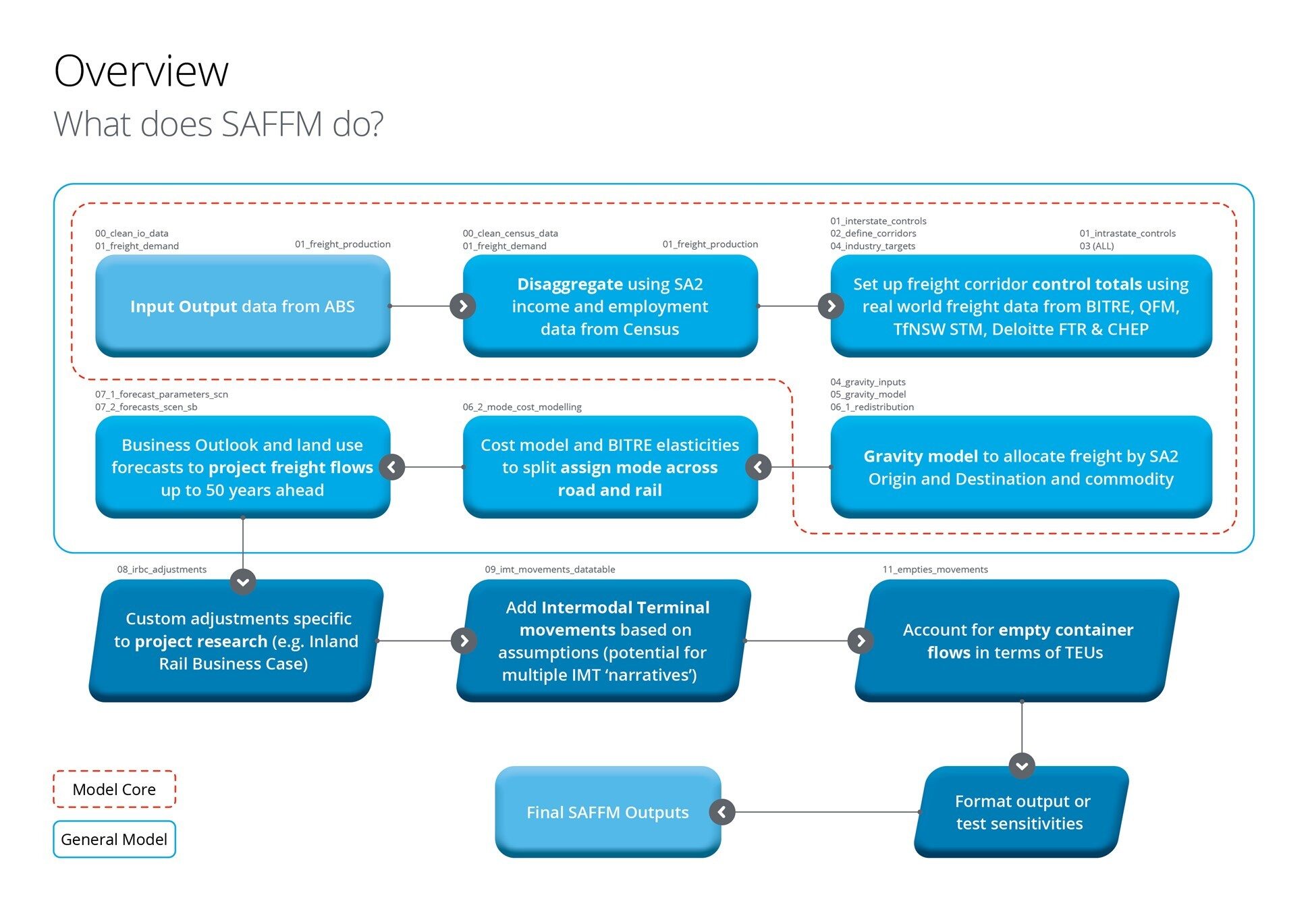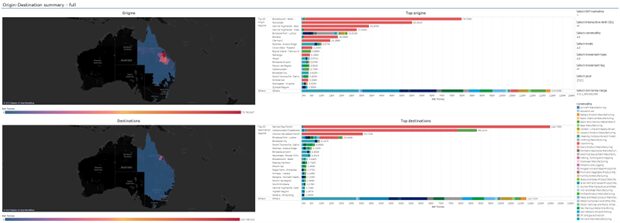Small Area Freight Forecasting Model (SAFFM)
- Company
- Deloitte Access Economics
- Location
- National
Deloitte Access Economics has developed a tool which shows current freight movements along the east coast of Australia and projects how these might change over time and with different transport options. This tool can be used to guide large investment decisions such as where a rail freight line should be built and where rail terminals should be located. This tool fills an important gap for decision makers who would otherwise not have a reliable source of information on who moves what where in Australia.
The Small Area Freight Forecasting Model (SAFFM) tool holds potential for significant impacts on safety and efficiency in Australia. By offering freight demand insights, road and rail cost analysis, and reflecting transport preferences, it enhances decision-making. SAFFM aids efficiency by supplying robust data for major road, rail, and intermodal projects, guiding investments effectively. Safety is heightened as the tool identifies cost-effective rail transport areas, influencing higher demand. This guides decisions to increase rail mode share, reducing road congestion and improving road safety. SAFFM's dual role in enhancing efficiency and safety makes it a crucial instrument for optimizing Australia's transportation landscape.
The data provided by the model can be broadly transferred and adapted. SAFFM can provide baseline forecasts that Government and Industries can use to support freight and supply chain planning and investment decisions on a common set of assumptions and forecasts. The forecasts are linked to real world observations with growth driven by Deloitte’s Macro Economic Outlook. The model can also be used to test infrastructure and service scenarios.
The innovative model tackles Australia's freight data gap. SAFFM combines microeconomic theory, available data, and computation to predict freight movement, a unique approach. It forecasts all transport modes, especially containerised freight demand, using containerisation rates for 64 commodity groups, providing realistic TEU forecasts. Additionally, it predicts empty container movement, enhancing overall accuracy.

